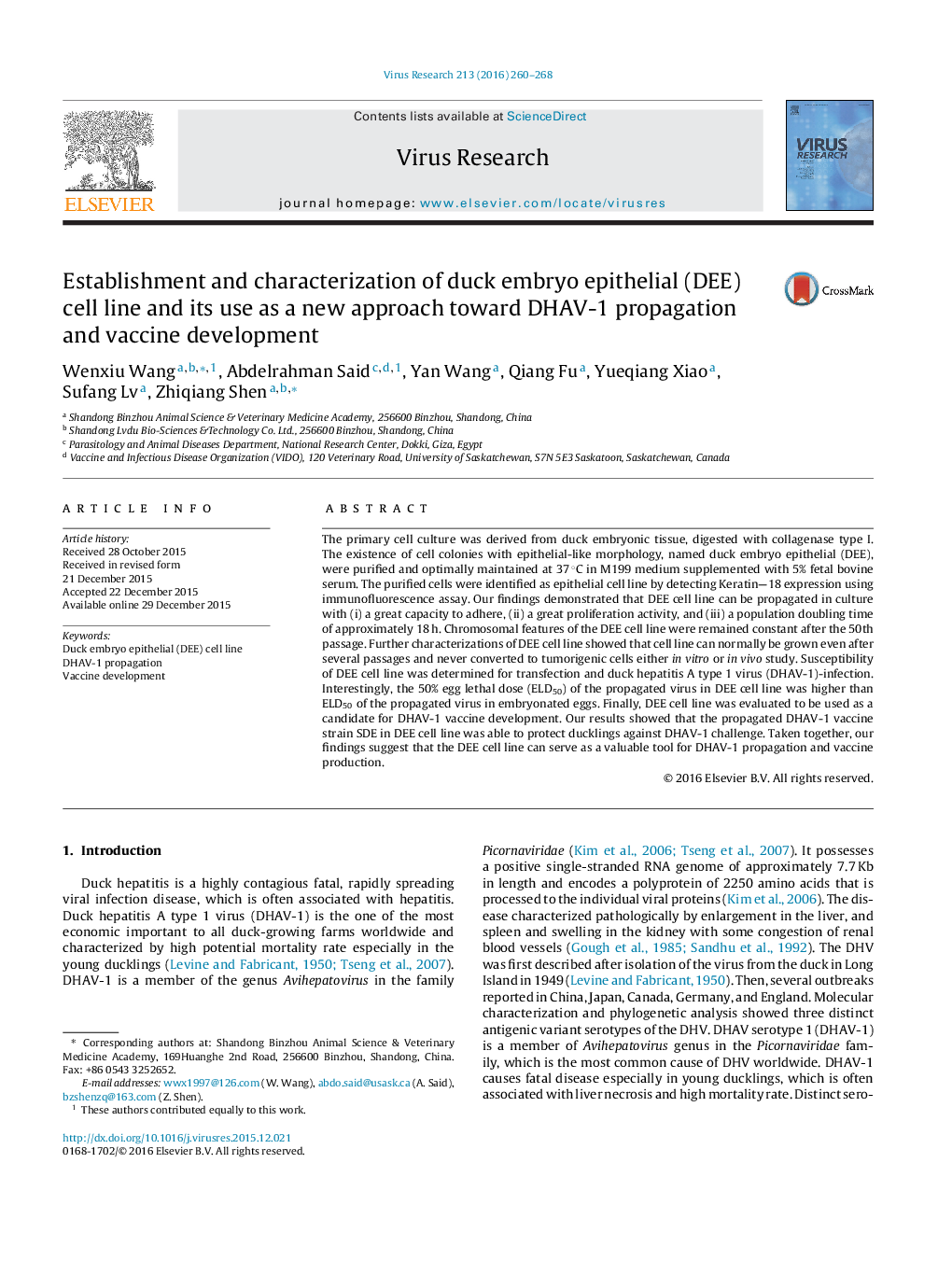| Article ID | Journal | Published Year | Pages | File Type |
|---|---|---|---|---|
| 3427918 | Virus Research | 2016 | 9 Pages |
•Established DEE cell line is characterized by a fast growth rate and a great proliferative activity.•DEE cell line can normally be grown without chromosomal abnormalities and tumorigenic transformation during its division.•DEE cell line is characterized by high transfection capabilities.•DEE cell line is a valuable candidate for propagation of the DHAV-1 and vaccine production.
The primary cell culture was derived from duck embryonic tissue, digested with collagenase type I. The existence of cell colonies with epithelial-like morphology, named duck embryo epithelial (DEE), were purified and optimally maintained at 37 °C in M199 medium supplemented with 5% fetal bovine serum. The purified cells were identified as epithelial cell line by detecting Keratin—18 expression using immunofluorescence assay. Our findings demonstrated that DEE cell line can be propagated in culture with (i) a great capacity to adhere, (ii) a great proliferation activity, and (iii) a population doubling time of approximately 18 h. Chromosomal features of the DEE cell line were remained constant after the 50th passage. Further characterizations of DEE cell line showed that cell line can normally be grown even after several passages and never converted to tumorigenic cells either in vitro or in vivo study. Susceptibility of DEE cell line was determined for transfection and duck hepatitis A type 1 virus (DHAV-1)-infection. Interestingly, the 50% egg lethal dose (ELD50) of the propagated virus in DEE cell line was higher than ELD50 of the propagated virus in embryonated eggs. Finally, DEE cell line was evaluated to be used as a candidate for DHAV-1 vaccine development. Our results showed that the propagated DHAV-1 vaccine strain SDE in DEE cell line was able to protect ducklings against DHAV-1 challenge. Taken together, our findings suggest that the DEE cell line can serve as a valuable tool for DHAV-1 propagation and vaccine production.
